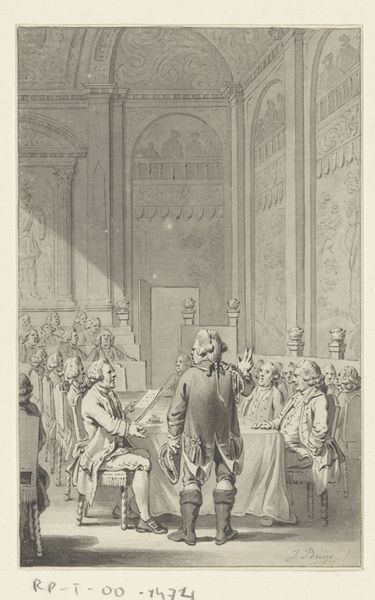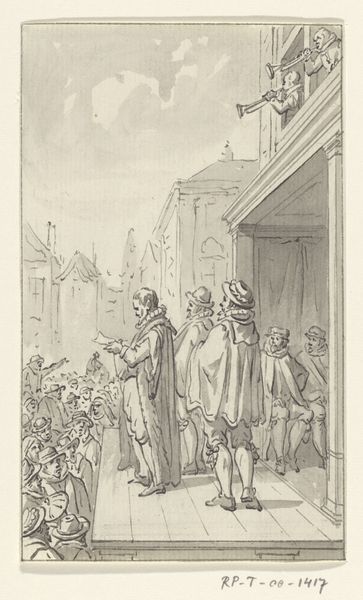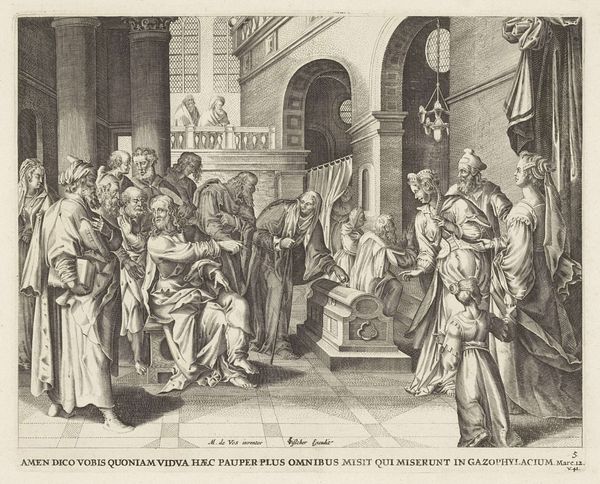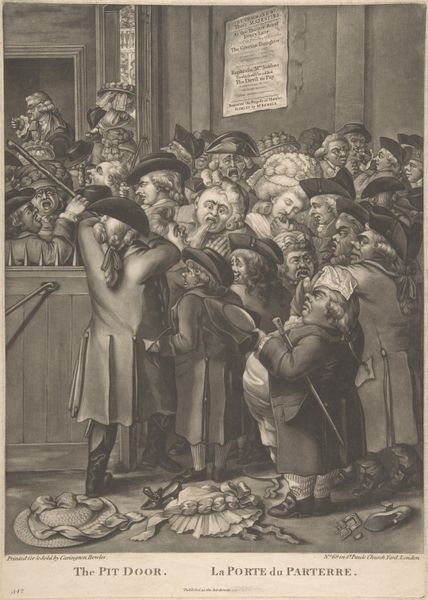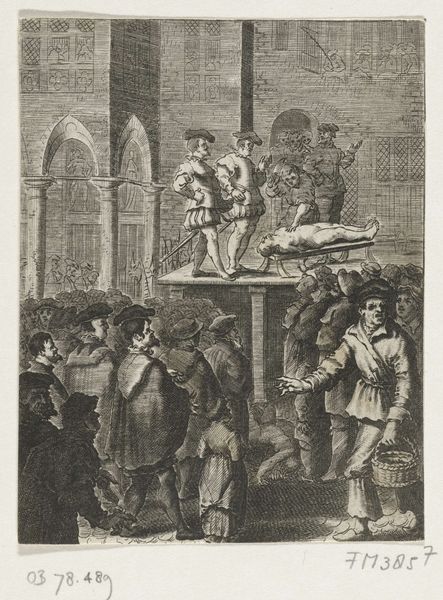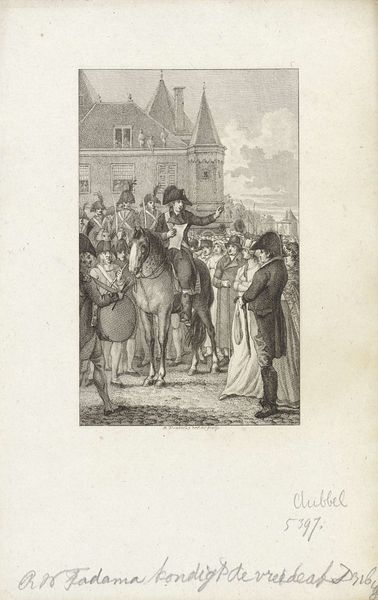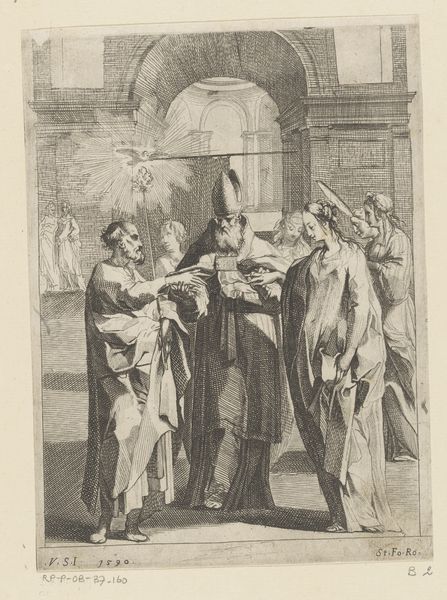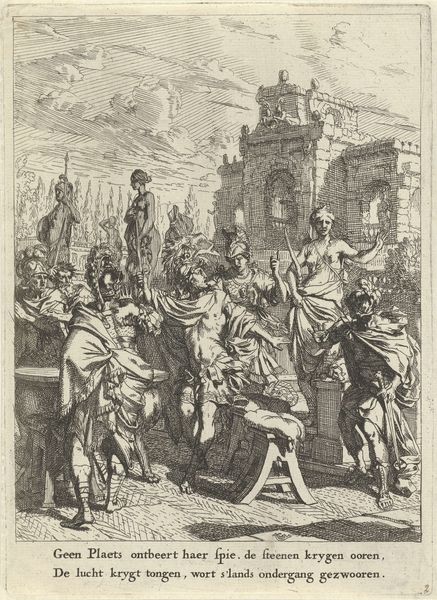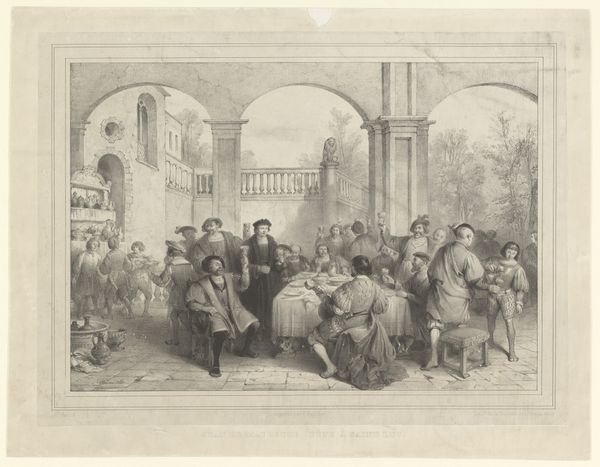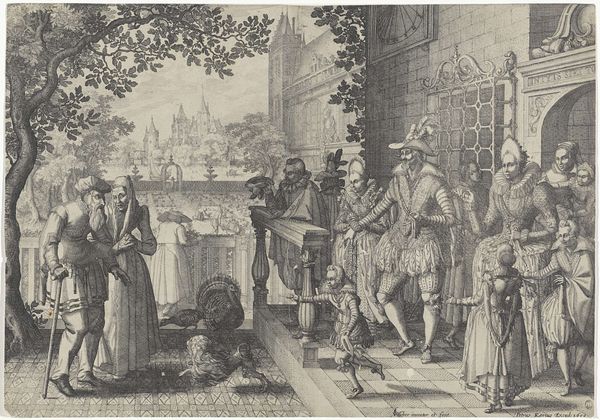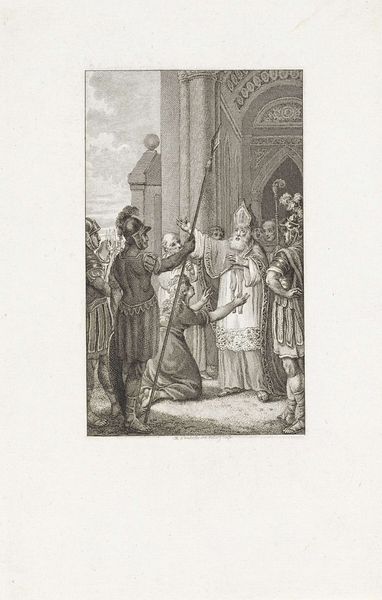
Biskop Rønnow forsvares af Hans Tausen mod Almuens Angreb 1883 - 1885
0:00
0:00
print, engraving
#
medieval
#
narrative-art
# print
#
history-painting
#
engraving
Dimensions: 807 mm (height) x 674 mm (width) (plademaal)
Curator: Here we have "Biskop Rønnow forsvares af Hans Tausen mod Almuens Angreb", which translates to "Bishop Rønnow Defended by Hans Tausen Against the Attack of the Commoners". This engraving by Joel Ballin dates from 1883 to 1885. It's part of the collection here at the SMK. Editor: My first impression is tension. The chaos on the street clashing with the steadfast pose of Tausen is striking. It's like a still moment carved from a riot. You can almost hear the shouting and the stones hitting the walls. Curator: Precisely! Ballin captured a crucial moment in Danish history. It depicts Hans Tausen, a key figure in the Danish Reformation, protecting Bishop Rønnow from an angry mob. It illustrates the religious and social upheaval of the time. The image clearly promotes Tausen's defiance in defending his ideological adversary. Editor: Yes, and you see it so clearly in the composition, too. The bishop looks almost timid in comparison to Tausen's bold stance as if even those on the same ideological side differed in their degree of willingness to defend the status quo. The shadowy figures behind suggest something ominous, too. Do you know what’s interesting? Look at how the stones become the border in the bottom of the piece, it’s a technique used to put you directly in the fray. Curator: Absolutely. It pulls the viewer directly into that historical clash. Ballin's choice of engraving lends a documentary feel. He offers the composition as something for public display—an interpretation of this conflict rendered with great detail to enhance the historical account. It clearly is shaped by Ballin's own contemporary politics of imagery, intended to both document and also shape history. Editor: Makes you wonder whose side Ballin was on. Is it simply about historical record, or something more biased? And isn't it fascinating how history keeps getting reshaped like that depending on who's holding the chisel, right? This image sparks the reminder to always question narrative—something an artwork has power to elicit, too. Curator: Exactly, an incredibly thoughtful piece to consider how such a seemingly traditional visual approach still promotes ongoing reflection, and is more nuanced than might be initially expected. Editor: Right, and like those old cobblestones underfoot, it really does connect us, I feel, in some funny way with a rowdy, rebellious past.
Comments
No comments
Be the first to comment and join the conversation on the ultimate creative platform.


